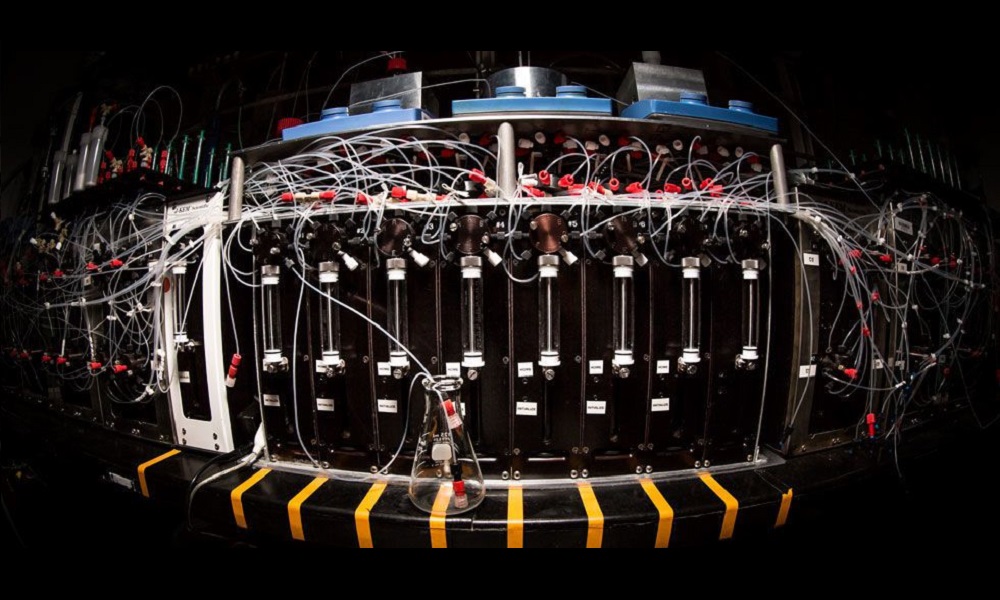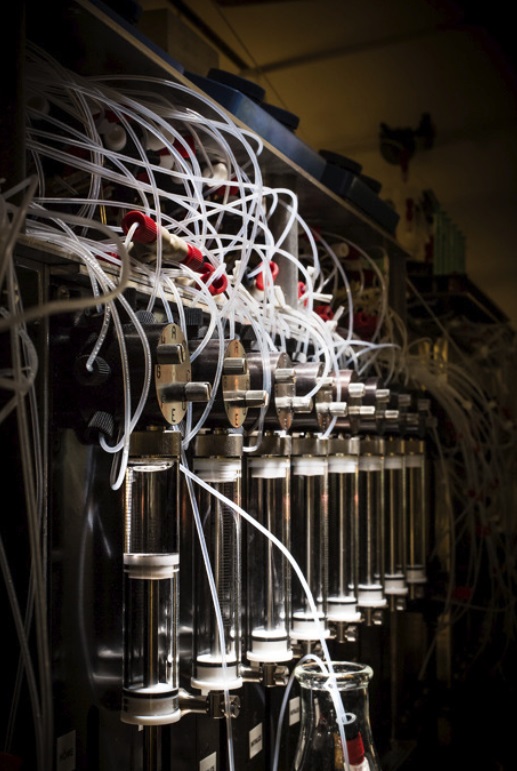Molecular 3D printer: 3D printing is going further
Posted By Lucie Gaget on May 16, 2018 | 0 comments
3D printing is the perfect method to 3D print your project, work on your product design and improve your manufacturing process. But 3D printing is also a real game changer, as it is the cradle of new impressive innovation. As you certainly know it, 3D printing is becoming quite useful for different industries, and it can even help on a chemical level. Do you know about the molecular 3D printer? Today, we are going to talk about this incredible 3D printer developed by the doctor Martin Burke.
We are going to tell you everything about this 3D printing technology and what it will change concretely for the medical industry. We are also going to see why the future of 3D printing is so promising, especially with the possibility to print at bigger and smaller scales.
What is a molecular 3D printer?
The medical doctor Martin Burke at the University of Illinois developed a new kind of 3D printer, that will not only revolutionize the use of 3D printing for healthcare but the whole medical industry. To make it simple, Martin D. Burke created a molecular printer, a 3D machine actually able to 3D print molecules. Does it sound crazy? Yes, but it is now a reality!
This printer is able to print at a new scale, with chemicals. Each chemical building block have connectors, the role of the molecular printer is to automate the process to connect the building blocks together, and then create a chemical reaction. The hard part for Burke and his team was to the cleanup the byproduct and to isolate correctly the molecule after the chemical reaction. They succeed, and give life to an impressive prototype of 3D molecular printer! The idea with this 3D molecular machine is to copy the way nature works when creating small molecules.
Doctor Martin Burke affirms that this technology is able to synthesize molecules, which has never been synthesized before. This innovative 3D machine can systematically synthesize thousands of different molecules, in at least 14 distinct classes of small molecules. What is this 3D machine changing exactly?
credit: 3dprintingindustry.com
New horizons for medical 3D printing
A machine offering new possibilities to create medications
Printing organic compounds is a great news for medical researchers, as this technology can be used for the development of new drugs. By creating molecules from scratch, these chemical syntheses, new drugs will be developed. This 3D printer is making it possible to create medicinal compounds. It could significantly improve the way medications are created, allowing to print in no time molecules that could take years to be crafted by chemists.
Moreover, thanks to Burke and his team, this machine could allow getting quite easily extremely rare molecules. It could even create things that never have been done before by humans. This way, scientist, and doctors could test the medicinal properties of molecules that never have been used before!
We saw previously that 3D printing is becoming a great asset in the medical industry and is allowing to save lives, and improve the life comfort of patients. Additive manufacturing to create molecule is clearly offering possibilities that we can’t even imagine for the moment.
Mass customization on another level
We know that mass customization is one of the main benefits of 3D printing. In the medical industry, it is, for example, allowing to create prosthesis perfectly adapted the patient’s morphology.
But with these new applications, it is clearly allowing mass customization on a brand new level. Indeed, it will be possible to create new drugs, new molecules dedicated to the specific needs of the patients. Treatments could be really improved and made to measure.
The future of 3D printing is really promising
3D printing at new scales
We know that the 3D printing technology is becoming more and more accurate. We are noticing the development of XL 3D printers but also 3D printers allowing to print at a small scale.
Additive manufacturing is a real game changer for many different industries. Indeed, new XL printers to print at architectural scale projects such as 3D printed houses or 3D printed bridges. The 3D printing technology is always going further and it keeps going!
As traditional 3D printing showed all of its unbeatable advantages (waste reduction, time-saving, faster product development, and so on), the expansion of the use of 3D printing appears to be inevitable. To be implemented in other various industries, it has allowed printing at bigger and smaller scales.
A technology constantly evolving
Additive manufacturing is in constant evolution. We can see that new technologies and new professional 3D printers are constantly unveiled on the market. New biocompatible materials for the medical industry,
All the industries are really looking for technologies that will improve their product development and their manufacturing process. That is why the technology is always evolving to provide better possibilities to many companies.
More than that, we saw that the 3D printing technology is also helping researchers, especially in the medical industry. 3D bioprinters, molecular printers, they are all offering new possibilities and will continue to evolve in the upcoming years which is really promising.
In the end, if everything is 3D printable, why wouldn’t it be possible to 3D print chemicals? 3D printing chemical structures are now progressively becoming a reality. You are certainly impatient to see what this machine will be able to do for the medical industry, and so are we! Subscribe to our newsletter and don’t miss any news about the evolution of 3D molecular printing.
The 3D printing technology and chemistry are more linked than what you may think. Check out our blog post about 3D modeling software for chemistry, you could learn a little more about how molecular modeling could be a great asset for physical chemistry, even using traditional professional 3D printers.
If you have a chemistry project and already have your 3D designs, don’t hesitate to upload your 3D file right now on our 3D printing service!
credit: 3DPrint.com


 Connect with Google
Connect with Google Connect with Facebook
Connect with Facebook
